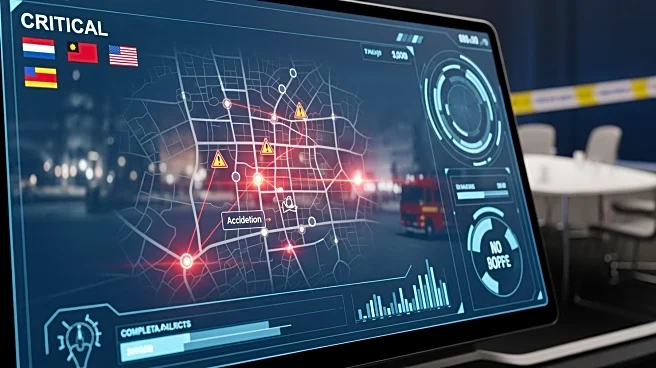What's Happening?
Researchers at Johns Hopkins University have developed an artificial intelligence tool named SafeTraffic Copilot, which aims to predict and reduce car accidents. This tool uses large language models to process
and learn from extensive data, including descriptions of over 66,000 accidents. The AI evaluates risk factors such as road conditions and driver behavior, providing confidence scores to indicate the reliability of its predictions. The model is designed to adapt to different traffic conditions and cultures, potentially expanding its application beyond the U.S. to countries with different driving patterns. The research, published in Nature Communications, highlights the potential of AI to enhance traffic safety by offering data-driven insights to policymakers.
Why It's Important?
The development of SafeTraffic Copilot represents a significant advancement in traffic safety technology. By providing accurate predictions and insights, this AI tool can help reduce the number of traffic accidents and fatalities, which have been rising in Maryland and other states. The ability to adapt to various traffic conditions and cultural differences makes it a versatile tool for global application. This innovation could lead to more informed infrastructure planning and policy-making, ultimately saving lives and reducing economic costs associated with traffic accidents. The use of AI in this context also demonstrates the growing role of technology in addressing complex societal challenges.
What's Next?
The researchers aim to expand the application of SafeTraffic Copilot to other regions and countries, particularly those with unique traffic conditions, such as South Asian countries where motorcycle accidents are prevalent. The tool's adaptability to different cultural driving behaviors could make it a valuable asset in international traffic safety efforts. Policymakers and infrastructure designers may begin to integrate this AI tool into their planning processes, potentially leading to changes in traffic management and road safety strategies. Continued research and development will likely focus on enhancing the model's accuracy and expanding its data sources.













